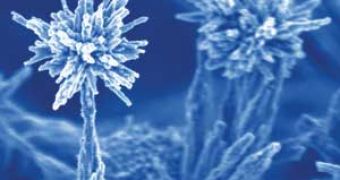Professor Marija Drndic and graduate student Michael Fischbein, from the University of Pennsylvania, have used an electron beam to hand-make nanoscale structures and devices like nanodisks, nanorings, nanowires, nanoholes and multi-terminal nano-transistors, from very thin metal sheets.
The new technique is a breakthrough in nanoelectronics, since no one has previously achieved dimensions below 10 nanometers.
Nanotechnology is a field of applied science and technology covering a broad range of topics. The main unifying theme is the control of matter on a scale smaller than 1 micrometer, normally between 1-100 nanometers, as well as the fabrication of devices on this same length scale. It is a highly multidisciplinary field, drawing from fields such as colloidal science, device physics and supramolecular chemistry. Much speculation exists as to what new science and technology might result from these lines of research.
"Many different approaches have been undertaken to fabricate the small structures needed to probe the phenomena that take place at the nanoscale, but the most widely used and versatile techniques are limited to tens of nanometers," said Drndic. "Reliably and consistently fabricating devices at the sub-10-nanometer scale from the top down is generally still challenging, but our technique offers a route to this regime."
They produced an electron beam inside a transmission electron microscope and used it to essentially sculpt various metal nanostructures by removing atoms from metal films, including gold, silver, and aluminum. The films varied in thickness from 10 to 50 nanometers and were pre-cut into 80-nanometer-wide strips. This top-down approach yielded structures and devices with near atomic detail.
"It's like using a magnifying glass and sun rays to sculpt an ice cube," says Fischbein. "However, using an electron beam instead of sun rays allows for precision on the atomic scale."
The new technique (referred to as TEBAL, for transmission electron beam ablation lithography) allows the contacts between a nanostructure and its leads to be resistance-free, and thus more efficient. Structures made from bottom-up techniques, assembled from smaller components, usually first need to be placed on a chip and then connected to larger circuitry, but TEBAL avoids these steps.
Future applications will rely on this technique's most important advantage: the fact that the structures can be imaged with atomic resolution and inspected in real time as they are created.

 14 DAY TRIAL //
14 DAY TRIAL //